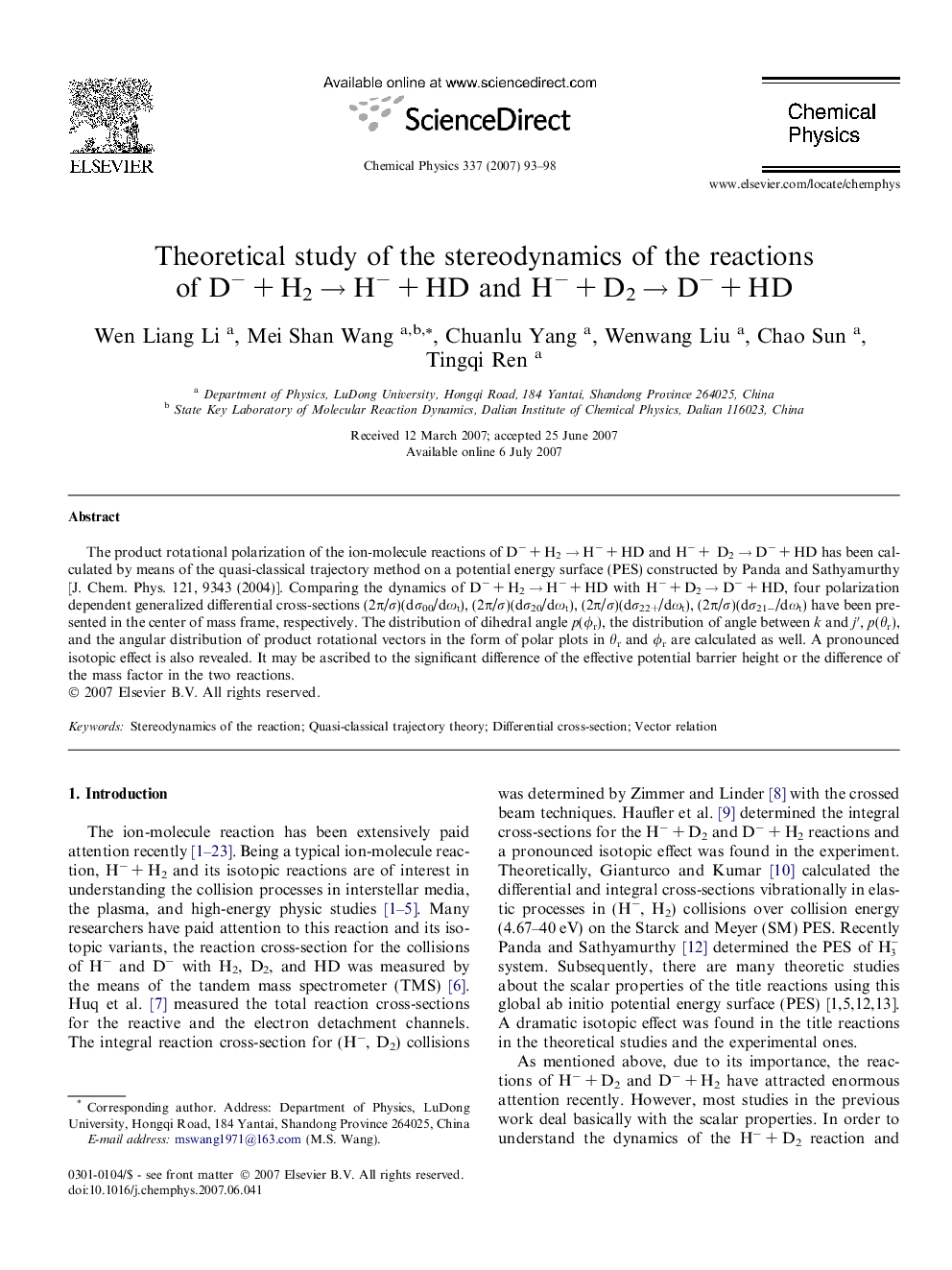| Article ID | Journal | Published Year | Pages | File Type |
|---|---|---|---|---|
| 5376437 | Chemical Physics | 2007 | 6 Pages |
Abstract
The product rotational polarization of the ion-molecule reactions of Dâ + H2 â Hâ + HD and Hâ + D2 â Dâ + HD has been calculated by means of the quasi-classical trajectory method on a potential energy surface (PES) constructed by Panda and Sathyamurthy [J. Chem. Phys. 121, 9343 (2004)]. Comparing the dynamics of Dâ + H2 â Hâ + HD with Hâ + D2 â Dâ + HD, four polarization dependent generalized differential cross-sections (2Ï/Ï)(dÏ00/dÏt), (2Ï/Ï)(dÏ20/dÏt), (2Ï/Ï)(dÏ22+/dÏt), (2Ï/Ï)(dÏ21â/dÏt) have been presented in the center of mass frame, respectively. The distribution of dihedral angle p(Ïr), the distribution of angle between k and jâ², p(θr), and the angular distribution of product rotational vectors in the form of polar plots in θr and Ïr are calculated as well. A pronounced isotopic effect is also revealed. It may be ascribed to the significant difference of the effective potential barrier height or the difference of the mass factor in the two reactions.
Keywords
Related Topics
Physical Sciences and Engineering
Chemistry
Physical and Theoretical Chemistry
Authors
Wen Liang Li, Mei Shan Wang, Chuanlu Yang, Wenwang Liu, Chao Sun, Tingqi Ren,
